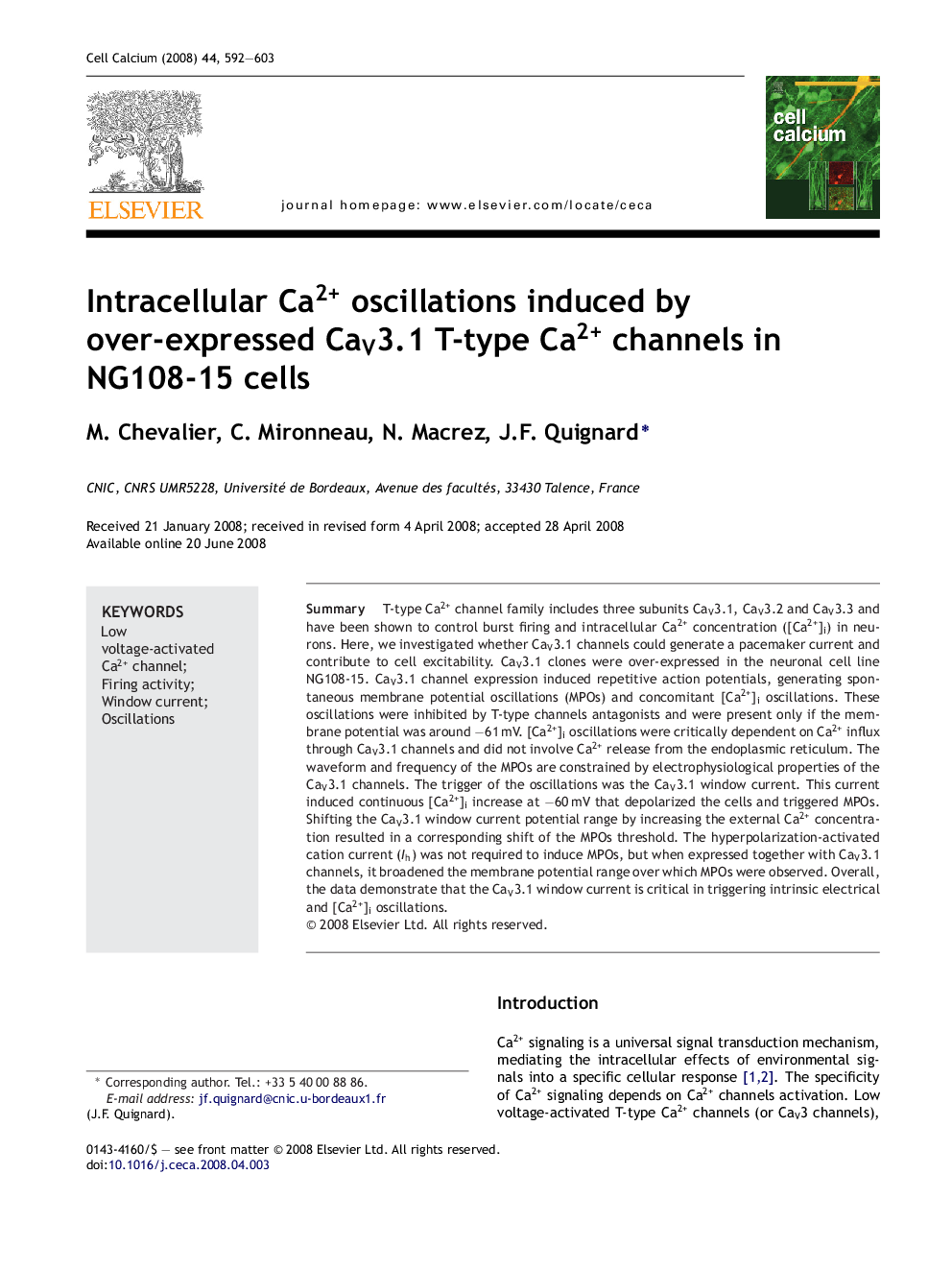| Article ID | Journal | Published Year | Pages | File Type |
|---|---|---|---|---|
| 10926448 | Cell Calcium | 2008 | 12 Pages |
Abstract
T-type Ca2+ channel family includes three subunits CaV3.1, CaV3.2 and CaV3.3 and have been shown to control burst firing and intracellular Ca2+ concentration ([Ca2+]i) in neurons. Here, we investigated whether CaV3.1 channels could generate a pacemaker current and contribute to cell excitability. CaV3.1 clones were over-expressed in the neuronal cell line NG108-15. CaV3.1 channel expression induced repetitive action potentials, generating spontaneous membrane potential oscillations (MPOs) and concomitant [Ca2+]i oscillations. These oscillations were inhibited by T-type channels antagonists and were present only if the membrane potential was around â61Â mV. [Ca2+]i oscillations were critically dependent on Ca2+ influx through CaV3.1 channels and did not involve Ca2+ release from the endoplasmic reticulum. The waveform and frequency of the MPOs are constrained by electrophysiological properties of the CaV3.1 channels. The trigger of the oscillations was the CaV3.1 window current. This current induced continuous [Ca2+]i increase at â60Â mV that depolarized the cells and triggered MPOs. Shifting the CaV3.1 window current potential range by increasing the external Ca2+ concentration resulted in a corresponding shift of the MPOs threshold. The hyperpolarization-activated cation current (Ih) was not required to induce MPOs, but when expressed together with CaV3.1 channels, it broadened the membrane potential range over which MPOs were observed. Overall, the data demonstrate that the CaV3.1 window current is critical in triggering intrinsic electrical and [Ca2+]i oscillations.
Related Topics
Life Sciences
Biochemistry, Genetics and Molecular Biology
Cell Biology
Authors
M. Chevalier, C. Mironneau, N. Macrez, J.F. Quignard,
